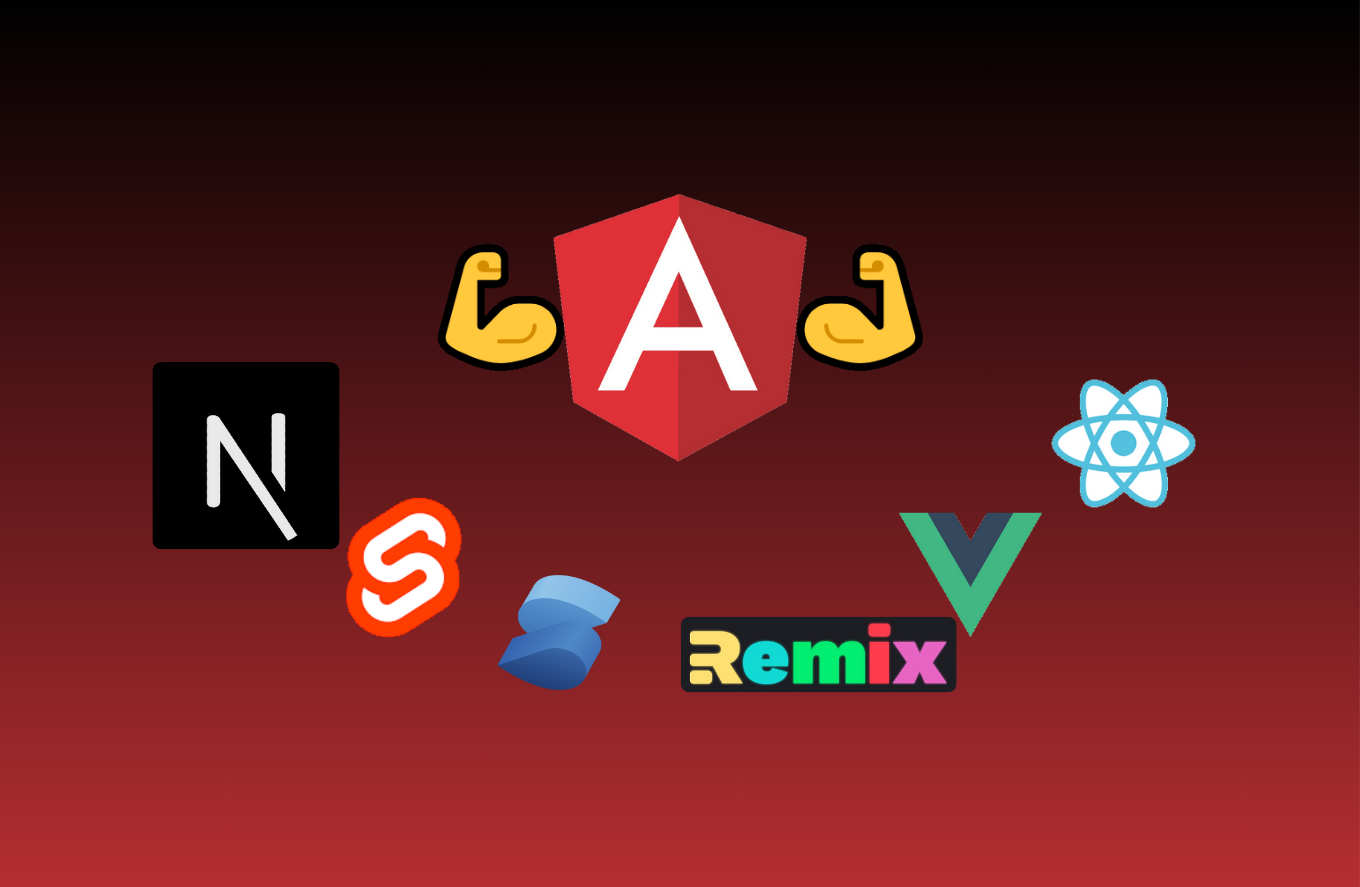
Angular: The Frontend Underdog
In the world of frontend development, trends come and go faster than you can say “JavaScript fatigue.” Shiny new libraries and frameworks pop up constantly, distracting most developers from making real progress. In moments like these its important to look for some solid ground, something more reliable, consistent, like Angular.
Once the reigning champion of frontend frameworks, Angular’s popularity has declined hard since the controversial changes of Angular 2 and the initial rise of React and other popular alternatives like Vue and Svelte.
But is the hate really justified? Does these new libraries live up to the hype? Let’s find out.

Popularity Isn’t Everything
A quick glance at Google Trends or GitHub stars might make it seem like Angular is losing relevance. While React and newer tools like Svelte dominate conversations, Angular’s decline in popularity often stems from misconceptions. Some developers perceive it as “too heavy” or “outdated,” but what they miss is Angular’s real strength: its completeness.
Angular is a framework, not a library. This means it provides everything you need out of the box—routing, state management, forms, HTTP handling, testing utilities, and more. While React enthusiasts often find themselves assembling a Frankenstein’s monster of libraries to achieve the same functionality, Angular developers can focus on building features instead of choosing between fetch, axios, or the latest trend like useQuery from TanStack.
A Framework for Builders, Not Tinkerers
Angular takes care of the boilerplate for you. Need a service to fetch data? Angular’s dependency injection system has your back. Want to manage your app’s state? Angular’s RxJS-powered reactive programming approach is baked right in. The framework’s opinionated structure might feel rigid to some, but for teams that value maintainability and consistency, it’s a blessing in disguise.
When using Angular:
- You’re not wasting time chasing trends. While the JavaScript ecosystem debates whether
fetchoraxiosis the superior HTTP client, Angular developers simply use theHttpClientservice, which is robust, well-documented, and tightly integrated into the framework. - You can skip decision paralysis. React developers may spend days debating whether to use Redux, MobX, Zustand, or Recoil for state management. Angular says, “Here’s RxJS and NgRx. Go build your app.”
- You get long-term stability. Angular is backed by Google, which means it evolves thoughtfully, avoiding the churn of trendy libraries that often disappear as quickly as they arrive.
Easy to Maintain, Even Years Later
One of Angular’s standout features is its emphasis on maintainability. Thanks to its modular architecture, strict typing (with TypeScript), and clear separation of concerns, Angular applications are easier to maintain, especially in the long run.
Whether you’re part of a small team or managing an enterprise-grade application, Angular’s structure ensures that your codebase doesn’t devolve into a spaghetti mess. Features like Angular CLI and Schematics automate repetitive tasks, making it easier to scaffold components, services, or modules and follow best practices without much effort.
Real Productivity vs. Trend Chasing
In the React ecosystem, new libraries seem to pop up daily, often reinventing the wheel for minor improvements. While there’s nothing inherently wrong with innovation, it can lead to a phenomenon known as “tool churn”—spending more time upgrading or replacing libraries than building features.
Angular’s all-in-one approach eliminates this churn. With Angular:
- You’re not worrying about third-party libraries breaking with every minor update.
- You’re not drowning in dependency hell.
- You’re not wasting energy on configuring and troubleshooting multiple tools.
Instead, you’re shipping features and delivering value to users.
The Underdog Advantage
While Angular might not have the buzz of newer frameworks, its reliability, stability, and developer productivity make it a hidden gem in the frontend world. It’s not trying to be trendy; it’s just trying to get the job done—and it does that exceptionally well.
So the next time someone dismisses Angular as “too heavy” or “not popular anymore,” just remember: real productivity isn’t about chasing the latest tools. It’s about building great software, and Angular gives you everything you need to do just that.

Share Your Feedback
Your thoughts help me improve my posts. Please fill out this quick form. :)
Newsletter
Join our free newsletter today to get notified on all new videos (some even exclusive) and blog posts.